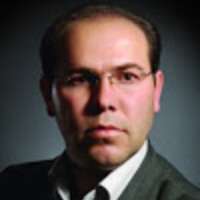The Role of Architectural and Urban Heritage Values in Cultural Tourism Development: Case study: The historical fabric of Urmia
Author(s):
Abstract:
Historical, cultural and tourism potentials especially in the central and historical urban areas as centers of attraction, the ability and possibility of dynamism and vitality of the urban fabrics could possibly attract tourists in the form of "cultural tourism". In this context, policy makers should note that regardless of economic profitability and touristic aspect of cultural heritage, it could be the basis of research and educational activities free from advertising, economic and service-oriented point of views. In this situation, tourism can be an important factor for the conservation of cultural heritage that stimulates the revival of local values and cultural patterns that are in the process of being destroyed. Urmia, as a historic city, has undergone many changes in structure and fabric during different periods of history which has had an effect on urban space. Some of the elements that have had an important role in the evolution of the city should be valued as objects of historical and cultural identity of the city which must be protected against current urban development plans and the results of modernism; more attention must be paid to maintaining the flow of life and prevent their physical and functional degradation. Therefore, this study tries to address the role of cultural tourism in depicting the urban and architectural heritage values and investigates the type of values that must be evaluated and maintained to develop cultural tourism. In addition, this study attempts to determine the appropriate scope and limitation of cultural tourism in Urmia. In this regard, using descriptive method and library study, the issues and concepts related to cultural heritage tourism and the necessity of paying attention to its values are examined. After exploring the different viewpoints in the field of cultural heritage, different values including emotional, cultural-historical, scientific, practical, architectural and urban heritage values are explained. Hence, a specialized team of elite experts and those involved in the field of cultural heritage and tourism was formed to assign numerical values to some heritage sites within the city of Urmia by using the analytical network process (ANP). The inconsistency rate of 0.05 indicates acceptable consistency and accuracy of calculations and the results of prioritization given by the model. Results indicate that the priority values in the three main elements of the structure of Urmia city including Jame-mosque, the historic Bazaar, and Eyalat Square are, in the order mentioned, emotional, cultural-historical, scientific and practical values which also define the limit and axis of cultural tourism. Thus, depicting the values and paying attention to them can be the basis for decisions related to the field of tourism and cultural heritage. Moreover, by prioritizing intervention in cultural tourism projects based on architectural heritage and urban location recognition capabilities, one can make a significant impact on the preservation and restoration of the historical identity of the city. This research has attempted to explain the importance of identifying urban and architecture heritage values. A new categorization of values are provided based on the needs of tourists, service-provider society, the heritage site, prioritization of values proportionate to the hierarchy of values perceived by the tourist, which should be illustrated by the provider society, and a recognition of architectural and urban capabilities. Furthermore, the relationship between the three variables of tourist, the provider society, and heritage sites are presented. It was determined that prioritization and application of present values in heritage sites within cities can have a very effective role in determining the place and boundaries of cultural tourism and conservation of urban and architectural heritage sites.
Keywords:
Language:
Persian
Published:
Motaleate Shahri, Volume:4 Issue: 14, 2015
Pages:
77 to 90
magiran.com/p1736204
دانلود و مطالعه متن این مقاله با یکی از روشهای زیر امکان پذیر است:
اشتراک شخصی
با عضویت و پرداخت آنلاین حق اشتراک یکساله به مبلغ 1,390,000ريال میتوانید 70 عنوان مطلب دانلود کنید!
اشتراک سازمانی
به کتابخانه دانشگاه یا محل کار خود پیشنهاد کنید تا اشتراک سازمانی این پایگاه را برای دسترسی نامحدود همه کاربران به متن مطالب تهیه نمایند!
توجه!
- حق عضویت دریافتی صرف حمایت از نشریات عضو و نگهداری، تکمیل و توسعه مگیران میشود.
- پرداخت حق اشتراک و دانلود مقالات اجازه بازنشر آن در سایر رسانههای چاپی و دیجیتال را به کاربر نمیدهد.
In order to view content subscription is required
Personal subscription
Subscribe magiran.com for 70 € euros via PayPal and download 70 articles during a year.
Organization subscription
Please contact us to subscribe your university or library for unlimited access!



